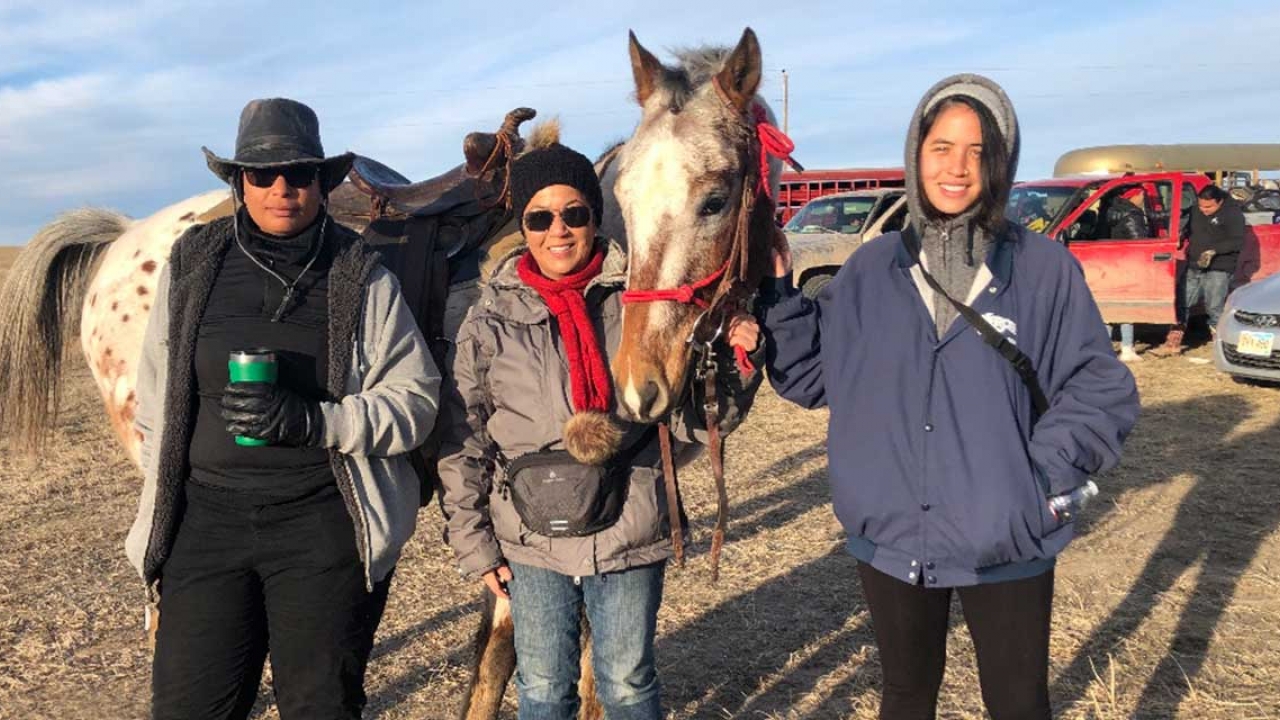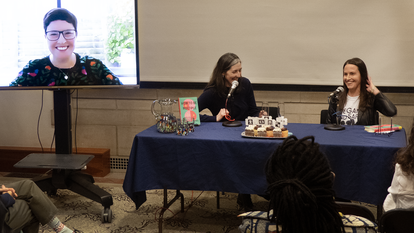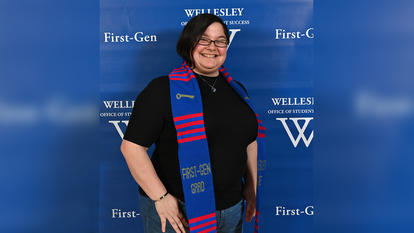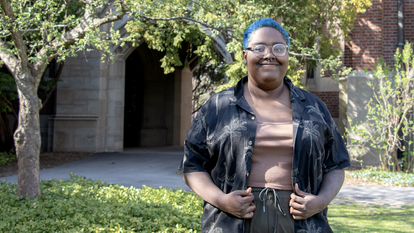On Horseback with the Lakota Sioux, Wellesley Professor Honors Those Killed in the Wounded Knee Massacre

On a bitterly cold, windy plain in North Dakota in December, Elena Creef, Wellesley professor of women’s and gender studies, saddled up a borrowed horse and set out on a 300-mile pilgrimage from Standing Rock Reservation in North Dakota to the Pine Ridge Reservation in South Dakota, the site of the 1890 Wounded Knee Massacre.
Creef was one of about 100 participants in the annual Lakota Chief Big Foot Memorial Ride, which marks the massacre’s anniversary. She has made the journey four times; this time one of her former students, Kat Hyslop ’17, and Wellesley Alumna Marseille Allen ’01, joined her.
“I joined the ride in 2015 in order to honor the memory of those who died and those who survived in 1890 and to learn firsthand lessons in Lakota history, culture, traditions, and the relationship between humans and horses,” said Creef. “As a professor, I also felt I could not teach my students about the events of December 29, 1890, without including how the Lakota community remembers this day each year with a sacred memorial ride.”
At Wellesley, Creef has developed courses, alone and also with Paul Fisher, associate professor of American studies, that involve aspects of Native American history, and culture. They have also worked as an interdisciplinary faculty team to teach a course that examines gender, race, and class in representations of the West.
Creef first learned of the ride in 1990 through newspaper coverage of the 100 year anniversary of the 1890 massacre. In 2013, when she and Fisher visited the Pine Ridge Reservation, they visited Wounded Knee for the first time. “Little did we know that this trip and the friends we would make along the way would end up changing our lives,” said Creef. “Our friends in Pine Ridge were horse people who had been involved with the Chief Big Foot Memorial Ride since its very beginning in 1986.”
In October 2016 and 2017, Creef and Fisher invited Chief Arvol Looking Horse, the spiritual leader of the Lakota, Nakota, and Dakota Nations, to campus as a distinguished speaker. Chief Looking Horse addressed the standoff and aftermath between the “water protectors” and the Dakota Access Pipeline drilling along the Missouri River on the Standing Rock Reservationan—event that made international news.
For the past two years, Creef has taken small groups of students enrolled in women’s and gender studies and American studies to the Pine Ridge, Cheyenne River, and Standing Rock Reservations for Alternative Spring Break.
One of those students was Hyslop, who came back to the Pine Ridge Reservation after graduating to teach fourth grade through Teach for America. Her students, she said, are hungry to learn about their native history and culture. Some are descendants of people killed at Wounded Knee.
“On a daily basis, my students display an unshakeable belief in their Lakota identities, even in the face of emotional and political adversity,” said Hyslop. “I love how excited they are to learn materials directly related to their lives.”
This was Hyslop’s first memorial ride, though she has taken her students on field trips to Wounded Knee. “The site is 45 minutes from where most of them live,” said Hyslop. “Taking part in the ride felt like a way for me to honor their identity and the community.”
Photo: Elena Creef (center) and Kat Hyslop ’17 (right) Marseille Allen ’01(left) outside Badlands National Park on Day 10 of the 14 day ride.



